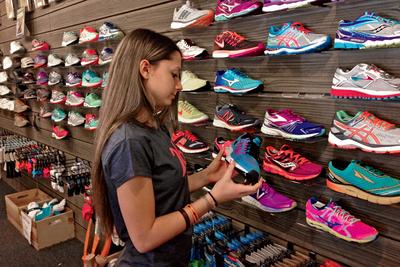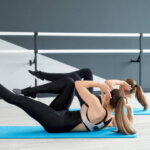Finding the right running shoe for you can be a difficult process. All too often, people just buy what looks good, what’s popular or the best deal on shoes they can find. The problem is, in the long run, this could end up costing you more because of a potential injury which leads to missed races (paid entry fees), missed training and possibly even doctor visits and physical therapy!
Here we will cover the steps to finding the right running shoe for you:
- Get to a specialty running store where you can have a trained professional look at your gait. At a minimum, the salesperson should take a look at your arches and watch you walk to determine possible pronation. Be sure to discuss with the salesperson any injuries or problem areas you are having.
- Try several different models on. Do a test run in each shoe. This could be outside the store or on the store’s treadmill. The shoes will feel different running vs. just standing or walking in them. Sure, you might have heard of the popular XYZ brand because of advertising or your friends bragging on how they love a particular shoe, but the fact is that everyone is different. Just because your best friend loves ACME Shoe Company brand shoes doesn’t mean those are the best ones for you.
- The best fit is a shoe that is approximately a half size bigger than your dress shoe. In an athletic shoe, it is ideal to have a thumb’s width of room at the toe. The reason this is ideal is because as you work out, your feet get warm and they will slightly swell. Getting a shoe with a little bit of wiggle room will help ensure you do not lose any of your toe nails on those long runs!
- Be sure the shoe feels comfortable in the arch. One of the biggest misconceptions is that you will “break in” a running shoe. The right running shoe for you will feel like putting on a slipper from the time you put your foot into it. If there is anything even slightly bothering you during your testing, it will likely be amplified when you get out and do longer runs.
- The shoes should be snug but not tight. If your heel starts slipping, try the “runner’s tie” by utilizing the last eyelet available. If your heel still slips, the shoe is either too big or is simply not the right shoe for you.
- Buy for comfort vs. looks. While everyone likes a certain color, the most important part is that you purchase a pair of shoes that fit you well, regardless of what the color scheme is. After all, you’ll likely need a new pair soon, so don’t worry about color! 😉
One other important thing to note – each year, shoe manufacturers come out with a current model of shoe. Sometimes, there are changes to the shoe which may make it not the right shoe for you any longer. It’s fine to “stick with what you know,” but when a new model comes out, you should really get to the running store and test them out before making your purchase.
If you have any questions about running shoes or how to find the right one for you, please feel free to contact me and I’ll help guide you through the process.
Train Right, Tri Right!
Coach MJ







